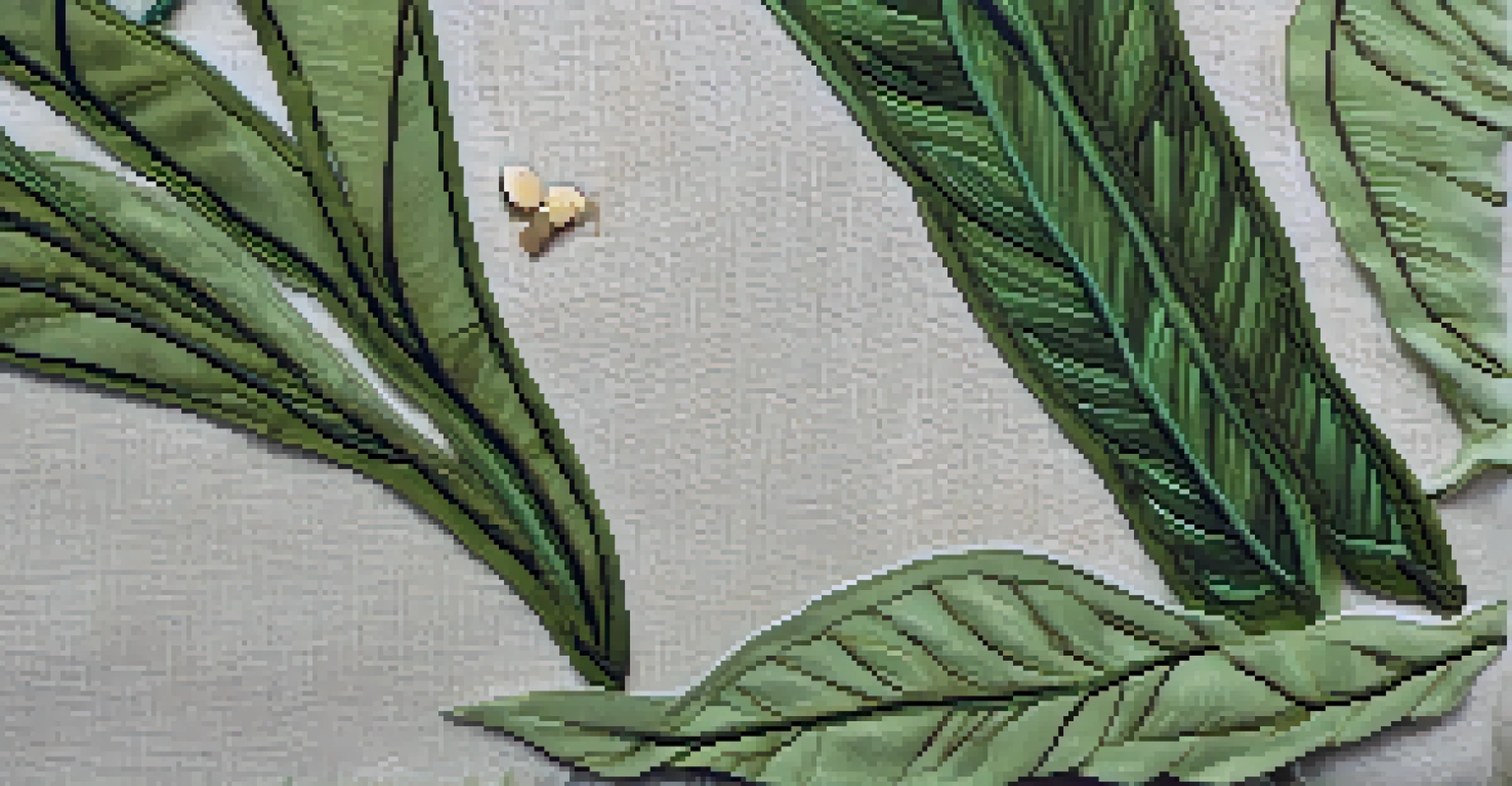Sustainable Fashion Brands: Leading the Eco-Friendly Movement

Understanding Sustainable Fashion: What Does It Mean?
Sustainable fashion refers to clothing and accessories made with eco-friendly practices and materials. The goal is to minimize environmental impact while promoting ethical labor practices. This movement is not just about style; it emphasizes the entire lifecycle of a garment, from production to disposal.
Fashion is the second most polluting industry in the world, right after oil.
At its core, sustainable fashion seeks to address the industry's significant contribution to pollution and waste. For instance, did you know that the fashion industry is responsible for about 10% of global carbon emissions? By choosing sustainable brands, consumers can help reduce this footprint.
Related Resource
Moreover, sustainable fashion encourages consumers to think critically about their purchases. Instead of buying fast fashion items that may only be worn a few times, shoppers are urged to invest in high-quality, timeless pieces that will last. This shift in mindset is crucial for a healthier planet.
Key Features of Sustainable Fashion Brands
Sustainable fashion brands often focus on using organic, recycled, or upcycled materials. For example, many brands now utilize organic cotton or recycled polyester to reduce their environmental impact. These materials are not only better for the planet but also often more durable and comfortable.

In addition to material sourcing, these brands prioritize fair labor practices. This means ensuring that workers are paid fairly and work in safe conditions. By supporting brands that adhere to these principles, consumers can contribute to a more equitable fashion industry.
Sustainable Fashion Reduces Impact
By choosing eco-friendly materials and ethical practices, sustainable fashion aims to minimize environmental harm.
Transparency is another hallmark of sustainable fashion. Many brands openly share their production processes and supply chain information, allowing consumers to make informed choices. This level of honesty builds trust and empowers shoppers to support ethical practices.
Top Sustainable Fashion Brands to Watch
There are several standout brands leading the charge in sustainable fashion today. For instance, Patagonia is renowned for its commitment to environmental activism and ethical production. They also encourage customers to repair their gear, promoting longevity over disposability.
Sustainability is no longer about doing less harm. It’s about doing more good.
Another notable mention is Reformation, which has gained popularity for its trendy designs made from sustainable materials. They also provide transparent information about their environmental impact, making it easy for consumers to see the difference their choices can make.
Related Resource
Everlane is also worth noting for its 'Radical Transparency' approach. They disclose the true costs behind their products, from materials to labor, allowing customers to understand exactly what they are paying for. This commitment to honesty resonates with many eco-conscious shoppers.
The Role of Consumers in the Sustainable Fashion Movement
Consumers play a pivotal role in the success of sustainable fashion. By making informed choices and supporting eco-friendly brands, shoppers can drive demand for more sustainable practices. This shift can encourage traditional brands to adopt greener methods to stay competitive.
Moreover, consumers are increasingly sharing their sustainable fashion choices on social media. This not only raises awareness but also inspires others to consider the impact of their purchases. One person's choice can spark a chain reaction of eco-conscious decisions.
Consumer Choices Drive Change
Informed consumer decisions can push brands towards more sustainable practices and foster a community of eco-conscious shoppers.
Lastly, engaging in the sustainable fashion conversation can foster community. By sharing tips on thrifting or sustainable brands, individuals can connect with like-minded people. This sense of community can amplify the movement, making sustainability a collective effort.
Challenges Facing the Sustainable Fashion Industry
Despite its growth, the sustainable fashion industry faces challenges. One major hurdle is the higher cost associated with sustainable materials and ethical labor. This often leads to sustainable fashion being less accessible to the average consumer, who may prioritize price over sustainability.
Additionally, there is still a significant amount of greenwashing in the fashion industry. Some brands may market themselves as sustainable without genuinely adhering to eco-friendly practices. Consumers must remain vigilant and do their research to avoid falling for misleading claims.
Related Resource
Lastly, the sheer scale of the fashion industry means that change can be slow. While many brands are making strides, the transition to a fully sustainable model will take time. Encouragingly, as awareness grows, more companies are beginning to prioritize sustainability, indicating a positive trend.
Innovative Practices in Sustainable Fashion
Innovation is at the heart of the sustainable fashion movement. Brands are exploring new materials, such as biodegradable fabrics and plant-based textiles, to reduce their environmental impact. For instance, items made from pineapples or mushrooms are becoming popular alternatives to traditional leather.
Technology is also playing a vital role in sustainability. Digital fashion shows and virtual fitting rooms are minimizing the need for physical samples, thus reducing waste. These advancements show that fashion can embrace modern solutions while remaining eco-conscious.
Innovation Shapes Fashion's Future
Emerging technologies and new materials are paving the way for a more sustainable and efficient fashion industry.
Additionally, some brands are experimenting with circular fashion models. This involves designing clothing that can be easily repaired, reused, or recycled, thus minimizing waste. By rethinking the traditional fashion cycle, these brands are setting new standards for the industry.
The Future of Sustainable Fashion
Looking ahead, the future of sustainable fashion appears promising. With increasing consumer awareness and demand for eco-friendly products, brands are feeling the pressure to adapt. This shift could lead to a more sustainable and ethical fashion landscape.
Moreover, as technology continues to advance, we can expect even more innovative solutions to emerge. From smart textiles that monitor environmental impact to AI-driven design processes, the possibilities are endless. These innovations can help create a more efficient and sustainable industry.

Ultimately, the success of sustainable fashion will depend on collective action. By supporting responsible brands and advocating for change, consumers can help shape the future of fashion. Together, we can build a more sustainable world, one stylish outfit at a time.